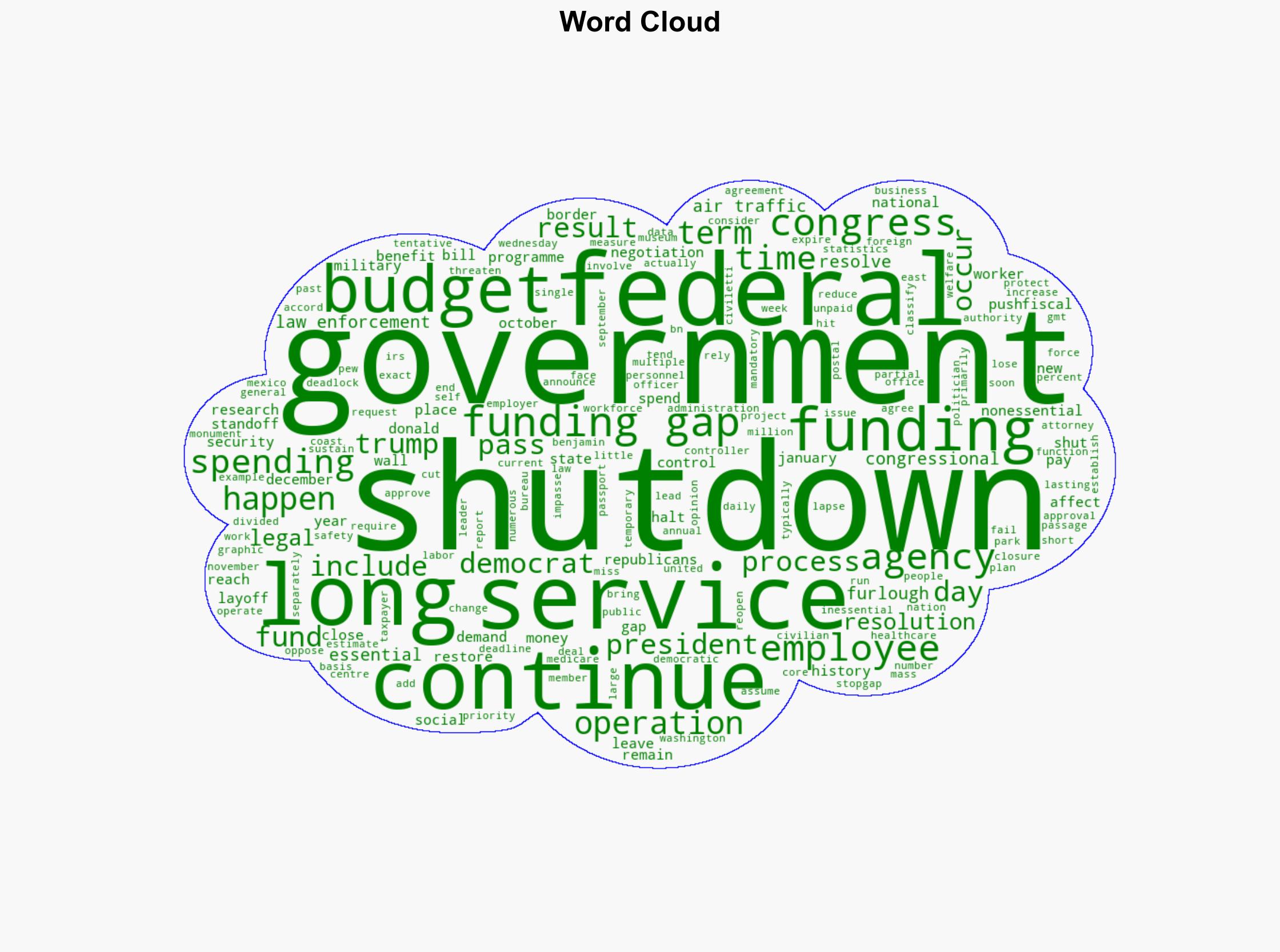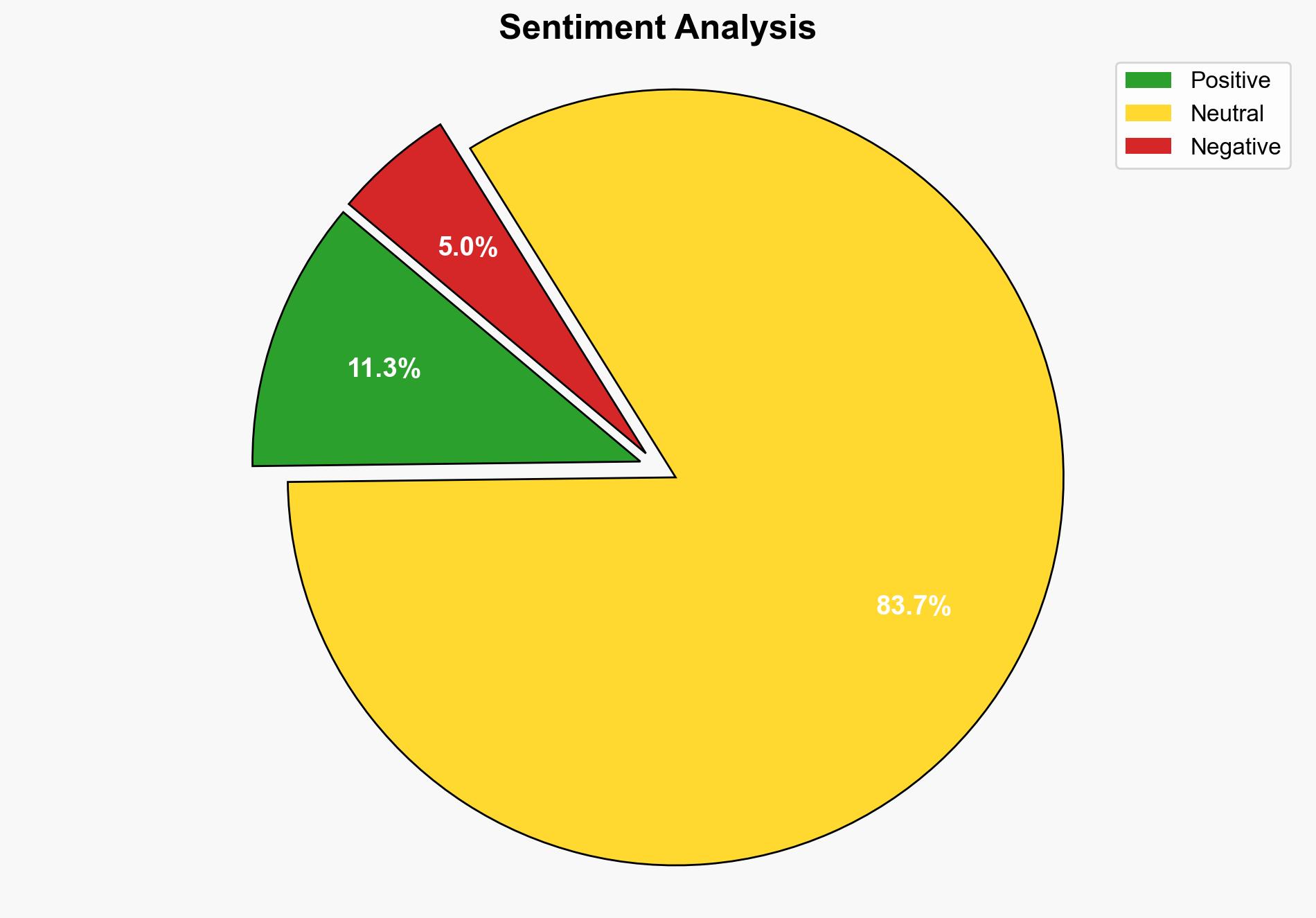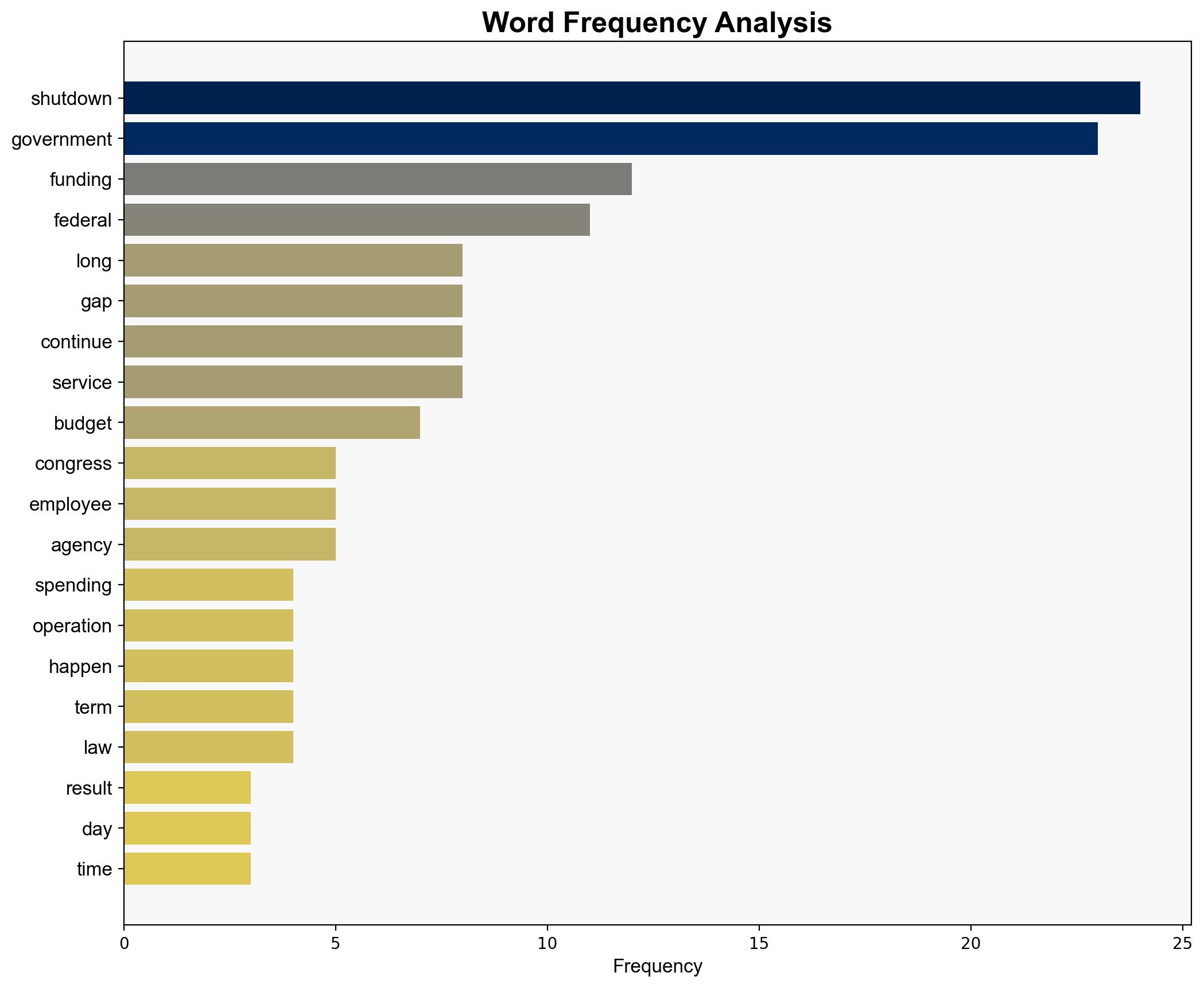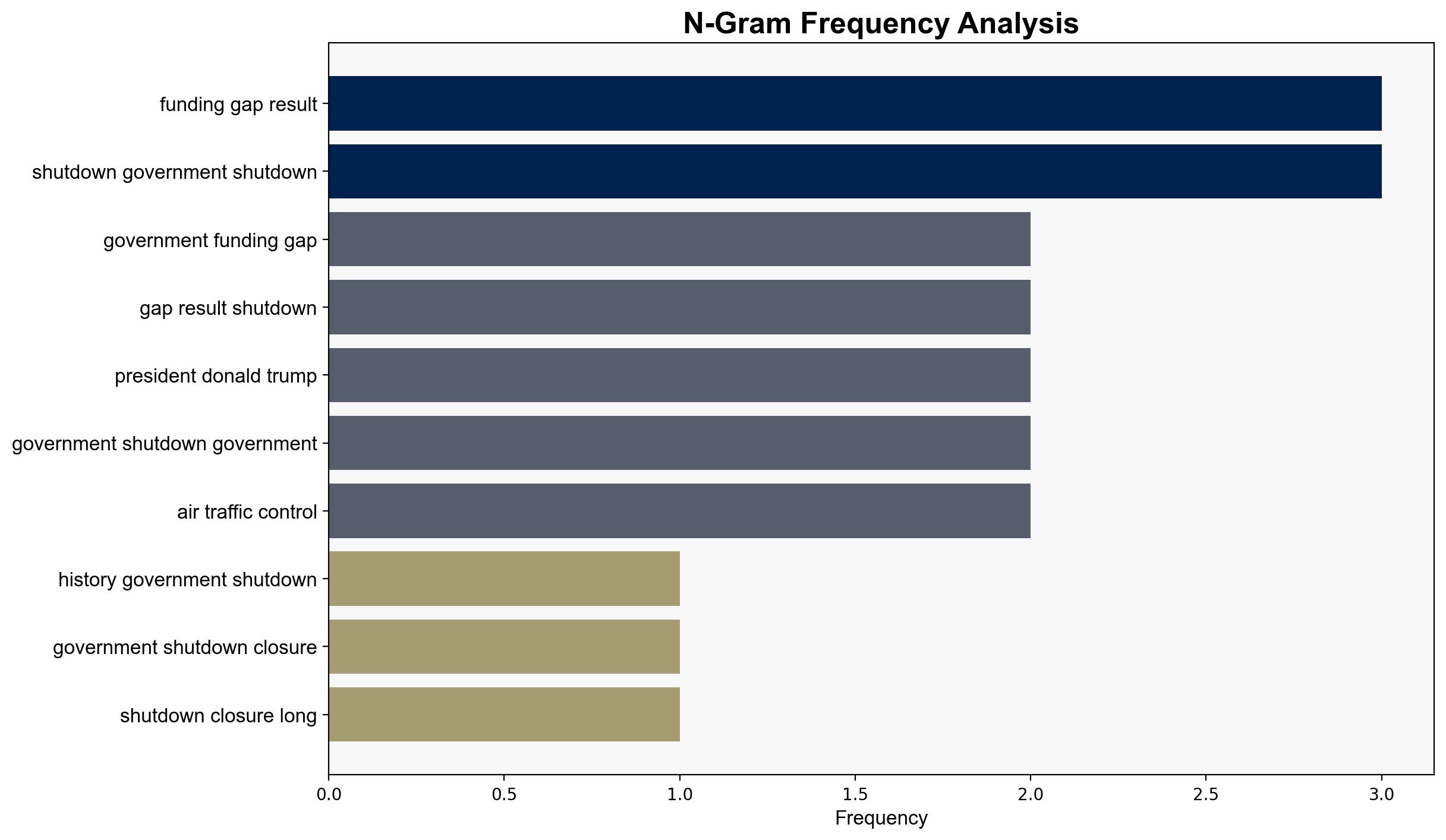A history of US government shutdowns Every closure and how long it lasted – Al Jazeera English
Published on: 2025-10-01
Intelligence Report: A history of US government shutdowns Every closure and how long it lasted – Al Jazeera English
1. BLUF (Bottom Line Up Front)
The analysis suggests that the recurring nature of US government shutdowns is primarily driven by political impasses over budget priorities, with a secondary hypothesis considering structural inefficiencies in the budgetary process. The most supported hypothesis is the political impasse, given historical patterns and recent events. Confidence level: Moderate. Recommended action: Enhance bipartisan negotiation frameworks to preemptively address budgetary disputes.
2. Competing Hypotheses
1. **Political Impasse Hypothesis**: Shutdowns are primarily caused by political standoffs between parties over budget allocations, as evidenced by the 2018-2019 shutdown over border wall funding.
2. **Structural Inefficiency Hypothesis**: Shutdowns result from inherent inefficiencies in the budgetary process, such as the reliance on continuing resolutions and the fiscal year timing mismatch.
Using the Analysis of Competing Hypotheses (ACH) 2.0, the political impasse hypothesis is better supported by historical data showing frequent shutdowns linked to specific policy disagreements.
3. Key Assumptions and Red Flags
– **Assumptions**: The political impasse hypothesis assumes that party divisions are the primary driver of shutdowns. The structural inefficiency hypothesis assumes that procedural flaws are significant enough to cause shutdowns independently of political factors.
– **Red Flags**: Potential bias in attributing shutdowns solely to political factors without considering procedural inefficiencies. Lack of detailed data on the impact of structural reforms on reducing shutdown frequency.
4. Implications and Strategic Risks
– **Economic Impact**: Prolonged shutdowns can lead to significant economic disruptions, affecting federal employees and dependent businesses.
– **Geopolitical Risks**: Shutdowns may weaken US global standing by projecting an image of political instability.
– **Psychological Impact**: Repeated shutdowns can erode public trust in government efficacy.
5. Recommendations and Outlook
- **Mitigation**: Establish a bipartisan committee to address contentious budgetary issues before deadlines.
- **Opportunities**: Use shutdowns as leverage to reform budgetary processes, reducing reliance on continuing resolutions.
- **Scenario Projections**:
– **Best Case**: Successful bipartisan negotiations prevent future shutdowns.
– **Worst Case**: Continued political gridlock leads to more frequent and prolonged shutdowns.
– **Most Likely**: Periodic shutdowns continue, driven by political disagreements.
6. Key Individuals and Entities
– **Donald Trump**: Former president involved in the 2018-2019 shutdown over border wall funding.
– **Benjamin Civiletti**: Former Attorney General who issued a legal opinion impacting shutdown procedures.
7. Thematic Tags
national security threats, economic stability, political gridlock, budgetary reform





